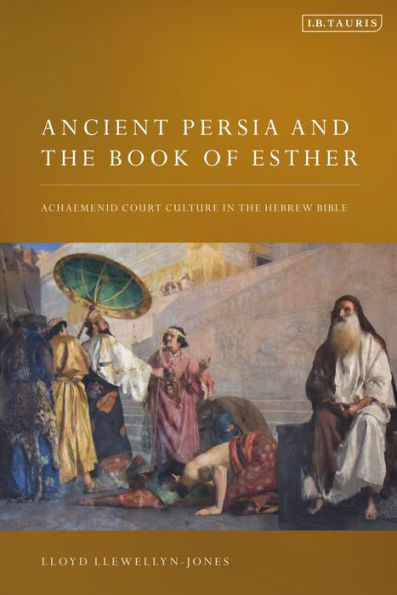Esther is the most visual book of the Hebrew Bible and largely crafted in the Fourth Century BCE by an author who was clearly au fait with the rarefied world of the Achaemenid court. It therefore provides an unusual melange of information which can enlighten scholars of Ancient Iranian Studies whilst offering Biblical scholars access into the Persian world from which the text emerged.
In this book, Lloyd Llewellyn-Jones unlocks the text of Esther by reading it against the rich iconographic world of ancient Persia and of the Near East. Ancient Persia and the Book of Esther is a cultural and iconographic exploration of an important, but often undervalued, biblical book, and Llewellyn-Jones presents the book of Esther as a rich source for the study of life and thought in the Persian Empire. The author reveals answers to important questions, such as the role of the King's courtiers in influencing policy, the way concubines at court were recruited, the structure of the harem in shifting the power of royal women, the function of feasting and drinking in the articulation of courtly power, and the meaning of gift-giving and patronage at the Achaemenid court.
"1141822994"
In this book, Lloyd Llewellyn-Jones unlocks the text of Esther by reading it against the rich iconographic world of ancient Persia and of the Near East. Ancient Persia and the Book of Esther is a cultural and iconographic exploration of an important, but often undervalued, biblical book, and Llewellyn-Jones presents the book of Esther as a rich source for the study of life and thought in the Persian Empire. The author reveals answers to important questions, such as the role of the King's courtiers in influencing policy, the way concubines at court were recruited, the structure of the harem in shifting the power of royal women, the function of feasting and drinking in the articulation of courtly power, and the meaning of gift-giving and patronage at the Achaemenid court.
Ancient Persia and the Book of Esther: Achaemenid Court Culture in the Hebrew Bible
Esther is the most visual book of the Hebrew Bible and largely crafted in the Fourth Century BCE by an author who was clearly au fait with the rarefied world of the Achaemenid court. It therefore provides an unusual melange of information which can enlighten scholars of Ancient Iranian Studies whilst offering Biblical scholars access into the Persian world from which the text emerged.
In this book, Lloyd Llewellyn-Jones unlocks the text of Esther by reading it against the rich iconographic world of ancient Persia and of the Near East. Ancient Persia and the Book of Esther is a cultural and iconographic exploration of an important, but often undervalued, biblical book, and Llewellyn-Jones presents the book of Esther as a rich source for the study of life and thought in the Persian Empire. The author reveals answers to important questions, such as the role of the King's courtiers in influencing policy, the way concubines at court were recruited, the structure of the harem in shifting the power of royal women, the function of feasting and drinking in the articulation of courtly power, and the meaning of gift-giving and patronage at the Achaemenid court.
In this book, Lloyd Llewellyn-Jones unlocks the text of Esther by reading it against the rich iconographic world of ancient Persia and of the Near East. Ancient Persia and the Book of Esther is a cultural and iconographic exploration of an important, but often undervalued, biblical book, and Llewellyn-Jones presents the book of Esther as a rich source for the study of life and thought in the Persian Empire. The author reveals answers to important questions, such as the role of the King's courtiers in influencing policy, the way concubines at court were recruited, the structure of the harem in shifting the power of royal women, the function of feasting and drinking in the articulation of courtly power, and the meaning of gift-giving and patronage at the Achaemenid court.
29.49
In Stock
5
1

Ancient Persia and the Book of Esther: Achaemenid Court Culture in the Hebrew Bible
280
Ancient Persia and the Book of Esther: Achaemenid Court Culture in the Hebrew Bible
280eBook
$29.49
$31.45
Save 6%
Current price is $29.49, Original price is $31.45. You Save 6%.
Related collections and offers
29.49
In Stock

Product Details
| ISBN-13: | 9781786726292 |
|---|---|
| Publisher: | Bloomsbury Publishing |
| Publication date: | 03/09/2023 |
| Sold by: | Barnes & Noble |
| Format: | eBook |
| Pages: | 280 |
| Sales rank: | 778,591 |
| File size: | 43 MB |
| Note: | This product may take a few minutes to download. |
About the Author
From the B&N Reads Blog
